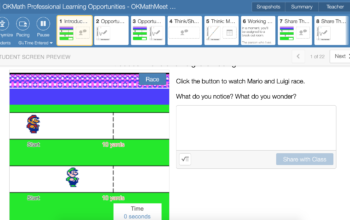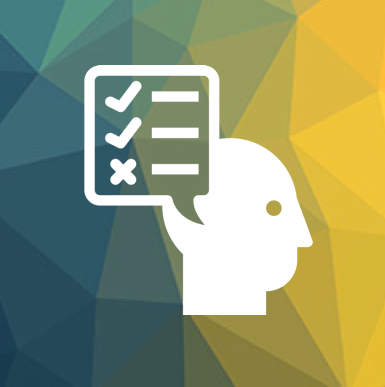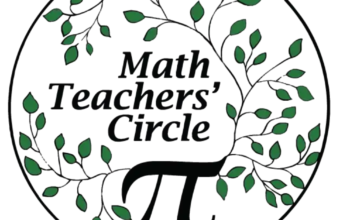Tiffany Neill and Levi Patrick
This article was originally posted on July 19, 2016 and is cross-posted at OKSciTeachers.com.
Problems Understanding and Defining STEM
Google “STEM activity” and you’ll see towers, bridges, and a lot of projects that use copious amounts of tape, candy, and spaghetti. Add “middle school” or “high school” to your search and you’ll find more wires, gears, and robot cars. In just a few moments, some 180 million search results might leave you believing stem is about building and programming.
Many teachers, administrators, parents and community members are interested in incorporating STEM into K-12 classrooms. In reality, you’d be hard pressed to find someone who isn’t an advocate for STEM, but as much as people advocate for STEM in the classroom those same people find themselves wondering, “What is STEM?”
“The acronym has been increasingly used and has reached a point where the ambiguous slogan requires definition with concrete discussions in terms of educational realities” (1). This means that the question of “what is STEM” might not be the right question in the first place. It leads us to look for examples but doesn’t connect us to the respective STEM disciplines that make up this now infamous acronym.
STEM Disciplines
If we do value STEM as a way of thinking that will promote success for our students, children, and community, we have to dig in and think about the disciplines that comprise STEM. With a better understanding of each discipline, we can begin better constructing a definition of STEM. The tabbed list in Table 1 provides an overview of the each of the individual disciplines that comprise STEM.
These simple statements, about complex disciplines, help provide a vision of what each discipline represents on their own. The overlap of the disciplines, though, indicates that neither technology nor engineering can actually exist in isolation.
Table 1: The Four STEM Disciplines (adapted from NRC 2014)
ScienceTechnologyEngineeringMathematics
- Study of the natural world, including laws of nature.
- Both a body of knowledge and a process - scientific inquiry
- People, organizations, knowledge, processes, and devices that go into creating and operating technological artifacts.
- Much of modern technology is a product of science and engineering, and technological tools are used in both fields.
- Both a body of knowledge - about the design and creation of human-made products - and a process for solving problems.
- Utilizes concepts in science and mathematics as well as technological tools.
- Study of patterns and relationships among quantities, numbers, and space.
- Logical arguments themselves are part of mathematics as along with the claims.
STEM as a Sound Board
Even with the expectations of each discipline of STEM being defined, you may still find yourself without an answer to the question, “What is STEM?” There may still be some confusion as to how to determine if a specific activity or program is STEM.
Perhaps the better question is what version of STEM is the activity or lesson? To answer this question, it might help to have a way of analyzing each discipline to determine how fully each discipline is addressed in an activity or program. Let’s try analyzing STEM through the imagery of a Sound Board, whereby each discipline can be turned up or turned down and where the only time STEM isn’t present is when all disciplines are completely turned down.
To determine whether a discipline is turned up or down in a STEM activity or program, a perspective of what each discipline looks like on a sliding scale could be valuable. Table 2 provides a framework that allows for this level of consideration.
|
Uppercase: Fully Turned Up
Lowercase: Somewhat Turned Down
Underscore: Completely Turned Down
|
Table 2: A STEM Framework
| S | T | E | M |
| Science content and practices are equally represented and on grade level. | Technology is both created and operated purposefully. | Engineering knowledge and design are present, and science and mathematics concepts are utilized. | Mathematics content and practices are equally present and on grade level. |
| s | t | e | m |
| Science content or practices are absent or science content and practices are not on grade level. | Technology is operated purposefully but not created. | Engineering knowledge or design are present but lacks utilization of science and mathematics concepts. | Mathematics content or practices are absent or mathematics content and practices are not on grade level. |
| __ | __ | __ | __ |
| Science content and practices are absent. | Purposeful operation and creation of technology are absent. | Engineering knowledge and design are absent. | Mathematics content and practices are absent. |
With the STEM Framework, an activity or program can be more closely examined to determine that the activity or program has science fully turned up, technology and mathematics half-way turned up and engineering absent as seen by the image above.
Does this mean it is a bad STEM activity or program because all disciplines aren’t fully turned up? Maybe not. Maybe this is exactly the version of the STEM the activity or program is targeting. With the STEM Framework as an analysis tool, better determinations about versions of STEM guide how adjustments can be made to turn up or turn down certain disciplines.
Versions of STEM
Stand-Alone Science or Mathematics
What if a lesson or program is evaluated with the STEM Framework to be S_ _ _ or _ _ _M? Are they still STEM? Responses might vary to this question, but according to Rodger Bybee (2013), a respected professional in the STEM education realm who has conducted an extensive historical analysis of STEM education in his book The Case for STEM Education: Challenges and Opportunities, “the purpose of STEM education is to develop the content and practices that characterize the respective STEM disciplines (p.4).”
 If versions of STEM that are stand alone science and mathematics are categorized as STEM, why didn’t we see images of science and mathematics pop up in the Google search for STEM? Perhaps this is because many people have a vision for STEM that doesn’t focus on the individual disciplines that comprise the acronym. For many the STEM acronym equates to critical thinking and problem solving. If we glance back at the descriptors for the individual disciplines of STEM in Table 1, we can see that each discipline relies on critical thinking and problems solving, even if the phrases are not explicitly utilized in the descriptors.
If versions of STEM that are stand alone science and mathematics are categorized as STEM, why didn’t we see images of science and mathematics pop up in the Google search for STEM? Perhaps this is because many people have a vision for STEM that doesn’t focus on the individual disciplines that comprise the acronym. For many the STEM acronym equates to critical thinking and problem solving. If we glance back at the descriptors for the individual disciplines of STEM in Table 1, we can see that each discipline relies on critical thinking and problems solving, even if the phrases are not explicitly utilized in the descriptors.
Stand-Alone Engineering
Can there be versions of STEM that are _ _E_? According to the descriptor for uppercase Engineering (E), it would be impossible to reach this level unless the content of mathematics or science were utilized along with engineering content and/or processes. If we think about how this would apply to the bridge building image from the Google search for STEM earlier, we would see that for the activity to be categorized as E, it would need to include the utilization of mathematics or science content to assist with the design of the bridge. For example, one should consider how the bridge can be designed to create a net force of zero (science) in order to stand upright. One might use mathematical concepts to make predictions about how much weight the bridge will hold prior to building the bridge. Without the utilization of mathematics or science content, alongside engineering, analysis with the STEM Framework would yield the following _ _e_ or even _ _ _ _.
Opportunities with the STEM Framework
Now that there is a way of thinking about STEM and all the possible versions of STEM that can play out in a K-12 classroom or program, rich discussions can be had about how to leverage all of the opportunities that a K-12 students might have to turn up STEM.
STEM in the Mathematics or Science Classroom
 For some this may be the first time they’ve thought about the regular math or science classes being STEM. As exhibited by Tables 1 and 2, each discipline and, therefore class, are essential parts of STEM. Additionally they are pivotal in their integration with technology and engineering. The question you may find yourself grappling with now is, “What version of mathematics or science are students experiencing in stand alone classes. Is it, s_ _ _ or _ _ _m where students may be exposed to the content of science or mathematics in the absence processes that engage students in critical thinking and problem solving? Could they be exposed to other versions like S_ _ _, _ _ _M, S_Em, or SteM that engage them in critical thinking and problem solving within the individual discipline or through the integration of disciplines?
For some this may be the first time they’ve thought about the regular math or science classes being STEM. As exhibited by Tables 1 and 2, each discipline and, therefore class, are essential parts of STEM. Additionally they are pivotal in their integration with technology and engineering. The question you may find yourself grappling with now is, “What version of mathematics or science are students experiencing in stand alone classes. Is it, s_ _ _ or _ _ _m where students may be exposed to the content of science or mathematics in the absence processes that engage students in critical thinking and problem solving? Could they be exposed to other versions like S_ _ _, _ _ _M, S_Em, or SteM that engage them in critical thinking and problem solving within the individual discipline or through the integration of disciplines?
Extended STEM Learning Opportunities
Some schools offer STEM specials or electives to students in addition to their stand alone science or mathematics class. The STEM Framework might be used to better determine what version of STEM the program is truly engaging students in and made clear to parent and community members.
This critical perspective helps show that perhaps not all STEM specials or electives are actually engaging in a version of STEM that is actually addressing any single discipline fully. Schools, teachers, and communities can now address how to invest time and money into programs that are truly beneficial to the goals of a rich STEM education.
Perhaps communities are beginning to think about ways that students can engage in STEM experiences outside of school. With the STEM Framework, communities can determine the different versions of STEM that could be offered through different programs, diversifying offerings and focusing resources on programs that effectively address the targeted discipline. This might allow students to encounter learning experiences as diverse as the field of STEM truly is.
Thoughts
We hope the STEM Framework serves as a tool to assist STEM educators and advocates in developing shared understandings of STEM to reduce current barriers that exist without it. Beyond that, we hope it assists all efforts to ensure students are given numerous, quality STEM experiences throughout their K-12 experiences.
Reflection Questions
Post responses to with #oksci and #okmath to Twitter and link this blog post to the tweet.
Q1: Does your perspective of STEM shift after reading this? If so, how?
Q2: How do you anticipate using this proposed Framework for STEM Education?
Footnotes
(1) Bybee, R,W. (2013). The case for STEM education: Challenges and opportunities. Arlington, VA. NSTA Press.
Tiffany Neill and I were honored to present the STEM Framework at the Governor’s STEM Summit on November 1st. We hope the presentation below might help you and your team create focused and productive conversations about STEM Education. It’s been really nice to hear the feedback about how useful the framework is as folks think about spending time, energy, and money to increase academic achievement and interest in STEM. Please keep us posted if you have questions or are having ideas to improve it! Feel free to use the presentation as you see fit.
Preferred citation: Neill, T. & Patrick, L. (2016, July 19). Turning it up: A framework for STEM education [web log post]. Retrieved from http://okmathteachers.com/stemframework.

Turning It Up: A Framework for STEM Education by Neill, T. & Patrick, L. is licensed under a Creative Commons Attribution-NonCommercial-ShareAlike 4.0 International License.


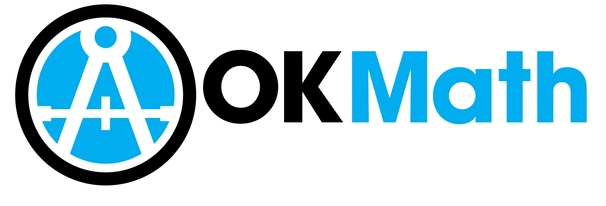
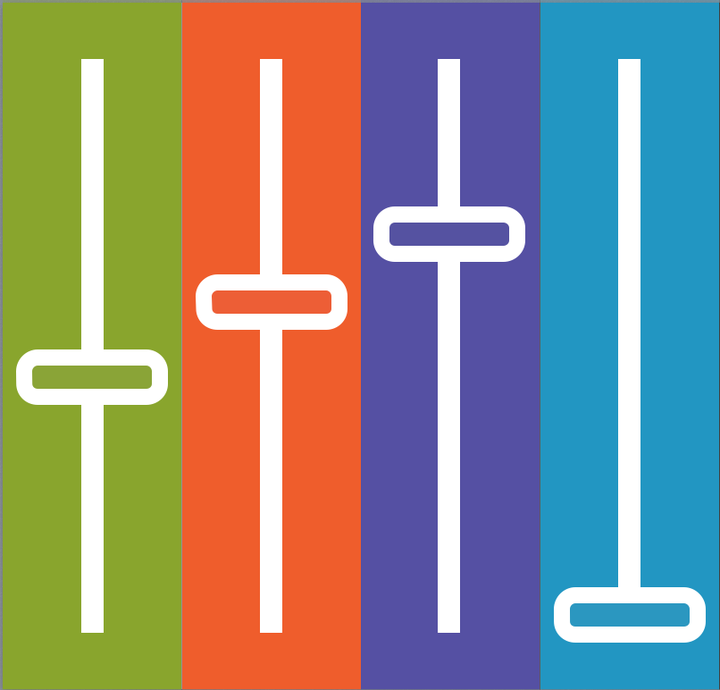

 For some this may be the first time they’ve thought about the regular math or science classes being STEM. As exhibited by Tables 1 and 2, each discipline and, therefore class, are essential parts of STEM. Additionally they are pivotal in their integration with technology and engineering. The question you may find yourself grappling with now is, “What version of mathematics or science are students experiencing in stand alone classes. Is it,
For some this may be the first time they’ve thought about the regular math or science classes being STEM. As exhibited by Tables 1 and 2, each discipline and, therefore class, are essential parts of STEM. Additionally they are pivotal in their integration with technology and engineering. The question you may find yourself grappling with now is, “What version of mathematics or science are students experiencing in stand alone classes. Is it, 
